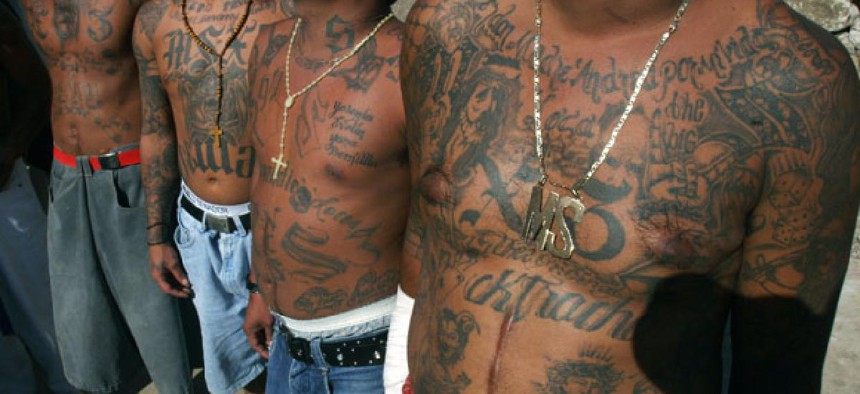FBI is on track to book faces, scars, tattoos in 2014

Esteban Felix/AP file photo
Questions linger about the accurate identification of criminals.
The FBI is 60 percent finished with a $1 billion update of its fingerprint database to allow for identifying suspects from their irises, faces and skin characteristics such as scars, according to the bureau. Meanwhile, skeptics and academic studies say determined terrorists can elude even a multimedia biometric database.
In a pilot program, the FBI earlier this year began matching the 12.8 million mug shots in its expanding database with crime photos submitted by Michigan police, as first reported by Nextgov. During a Senate subcommittee hearing Wednesday, bureau officials gave assurances that facial recognition alone is not being used to finger suspects.
“Information derived from the pilot search requests and resulting responses are to be used only as an investigative lead,” said Jerome Pender, deputy assistant director of the FBI criminal justice information services division. “Results are not to be considered as positive identifications.”
The bureau’s technology works by querying the database for mug shots resembling a face that local authorities have uploaded for “law enforcement purposes,” as defined by rules. The officers first choose how many similar shots they would like to see. The machine then returns a list of possible matches plus corresponding rap sheet numbers, ranked in order of similarity -- “along with a caveat that the response should only be used as an investigative lead,” Pender said.
The police department requesting the information is then responsible for conducting a full investigation of potential matches, according to the bureau.
“You can’t change your fingerprint and you can’t change your face, unless I guess you go to a great deal of trouble,” said Sen. Al Franken, D-Minn., chairman of the Judiciary Subcommittee on Privacy, Technology and the Law.
That’s not necessarily true, opponents say.
During interviews, critics of photo facial recognition said the FBI’s system, as currently designed, will be no match for deceptive crooks, who, for instance, wear special contact lenses or undergo cosmetic surgery. Other imaging tools, such as special infrared cameras, may be better for booking criminals if the police want an accurate, permanent identification record, they said.
Infrared facial recognition technology works similarly to the military’s night-vision gear, but instead of mapping body heat it senses thermal blood vessels in the face. Skin directly on top of blood vessels is warmer than the surrounding skin, enabling the camera to “visualize,” or map, the face’s unique vascular pattern.
The price of a camera capable of capturing thermal identities has plummeted from $80,000 to about $5,000 during the past decade, said Stanley E. Derr, president of SED Technology LLC, an infrared imaging research and development firm. The business is working on a recognition system that would cost a county sheriff’s office between $25,000 and $50,000, he said.
The infrared facial recognition technology is considered very reliable because factors such as environmental conditions or a subject’s clogged arteries or spider vein removal won’t change that pattern, Derr said. Cosmetic surgery or scarring, “may shrink your blood vessels, but it does not do away with them,” he said. “To really change the major blood vessels in your face you have to go deep enough that you have a real chance of killing the person.”
Under the FBI’s present plan for the biometric upgrade, called the Next-Generation Identification program, the face search function is expected to be fully operational by summer 2014, along with tools for matching scars, marks and tattoos.
On Tuesday, Nextgov reported that the FBI is seeking advice from municipalities and vendors on technology that can spot offenders by interpreting the symbolism of their tattoos.
By fall 2013, the system is slated to try out searching digital scans of irises, the colored portion of the eyes, according to the FBI. Currently, the bureau is building a database of eye patterns partly from scans submitted by jails that use iris recognition to monitor prisoners’ comings and goings, Nextgov learned in June.
Iris scans, with or without contact lenses, may be misleading, according to new research. Scientists at the University of Notre Dame have discovered that digital iris files morph with age.
Still, the bureau seems confident with the existing technology. “The NGI program, which is on scope, on schedule and on cost and is 60 percent deployed, is enabling the FBI to meet its criminal justice mission,” Pender said.
NEXT STORY: Three Overlooked Telework Trends






